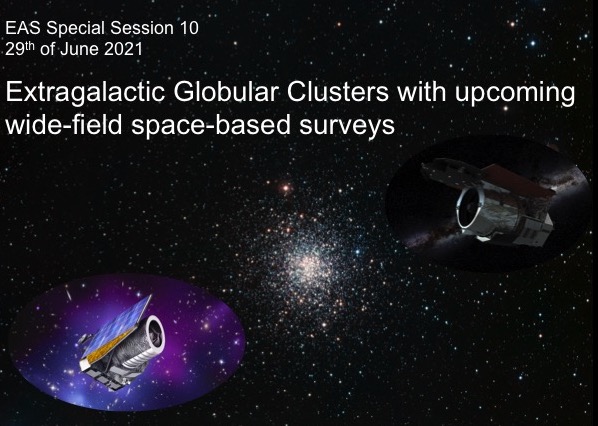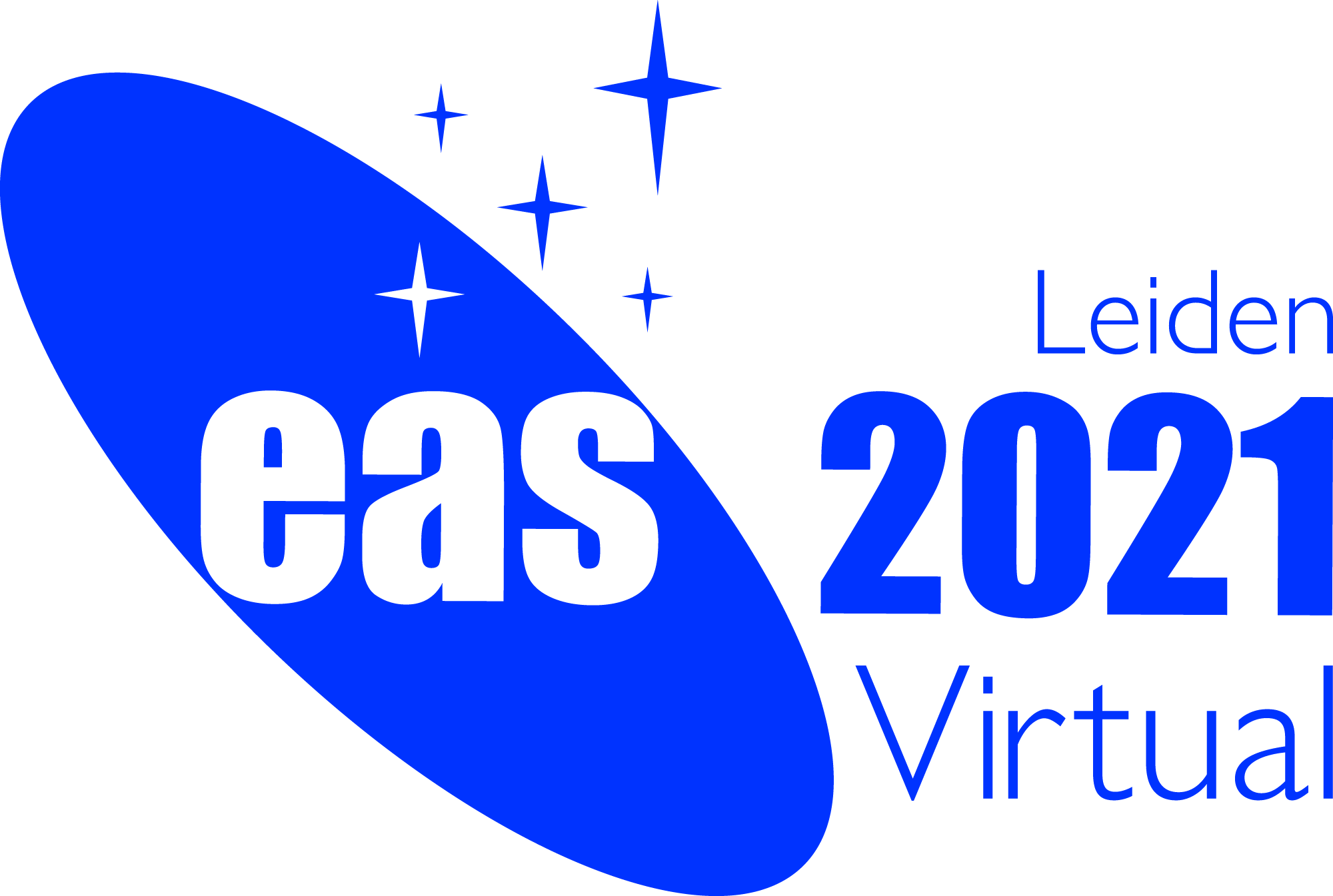Special Session SS10
29 June 2021
Extragalactic Globular Clusters with upcoming wide-field space-based surveys

Aims and scope
Globular Clusters (GCs) are ubiquitous in galaxies through space and time. Thus, these
systems are among the fundamental building blocks of galaxies and trace their assembly
history. They have always played a crucial role in astrophysics.
The properties of GCs exhibit strong galaxy-to-galaxy differences, which result from differences
in their evolutionary histories. Thus, to approach a more complete picture of GC formation, they
have to be studied in a variety of galaxies with different masses, environments, and formation
histories. Understanding how star cluster luminosity functions, physical sizes, and contents vary
as a function of the environment in which they were formed will be crucial for our understanding
of GCs themselves and to use them as fossil records of previous galaxy merger events.
The first space-based imaging surveys that will cover large fractions of the sky, such as EUCLID
and the Roman Space Telescope, will launch in the next few years. These surveys will enable
us to identify extragalactic GCs far beyond the distances where it is currently feasible to cover
large areas of the sky. Thanks to their depth and spatial resolution, and to the synergies
implemented with ground-based surveys, the wide-field space-based surveys are expected to
increase the number of known extragalactic GCs dramatically. The combined benefits of a great
homogeneity and of morphological information will lead to a large range of applications in GC
science. This conference aims at bringing together the extragalactic GC community and experts
of each survey, to specifically discuss and explore the future avenues that these exceptional
data sets will provide in this area of investigation.
In particular we plan to explore how these surveys will expand the use of Globular Clusters as
kinematic tracers of former accretion events as well as tracers of the dark matter content of their
parent galaxies. These wide-field imaging surveys that have a high enough spatial resolution to
resolve GCs will mark a leap in detection efficiency and thus how well we can use them as
tracers. Using GCs as dynamical tracers will highly depend on the synergies of these space
based surveys with ground based spectroscopic surveys which will be explored in this session.
A second focus topic will be how the extension of precision photometry to the GCs of more
distant galaxies will shed light on cluster formation processes and on the peculiarities of their
stellar populations. The surveys will help determine how GC color-color relations and
age-metallicity distributions depend on the environment these objects live in. By considering the
integrated light signature of multiple stellar populations across the optical and near-IR spectrum,
new insights may be gained on issues such as the abundance anti-correlations and UV-upturn
in massive elliptical galaxies.
As a third cornerstone, the meeting will provide a platform for theorists to share their predictions
for the formation and co-evolution of galaxies and their GC populations. Many of these
predictions on Globular Cluster population assembly will be testable for the first time with the
upcoming larger datasets.
Goals:
1. How will space-based deep wide-field surveys shape extragalactic GC astronomy?
2. What are the synergies of space based surveys with ground based photometric and
spectroscopic surveys to use GCs as large scale dynamical tracers?
3. How will these large scale surveys and their precision photometry help us determine how
the stellar populations and abundances of GCs depend on their environment?
4. What models of GC and Galaxy co-evolution are available as counterparts to these
observations and what are the new testable parameters?
Programme
Invited speakers
- Patrick Côté
- Ariane Lançon
- Dougal Mackey
- Marta Reina-Campos
- Laura Sales
- Rubén Sánchez-Janssen
Scientific organisers
- Karina Voggel (Co-Chair)
- William Chantereau (Co-Chair)
- Eric Peng
- Annette Ferguson
- Søren Larsen
- Ariane Lançon
Contact
- karina.voggel @ astro.unistra.fr
wchantereau @ unistra.fr
|

 A power cut will shut down all EAS services on Tuesday, 10 January 2017 starting at 7:30 CET.
A power cut will shut down all EAS services on Tuesday, 10 January 2017 starting at 7:30 CET.


